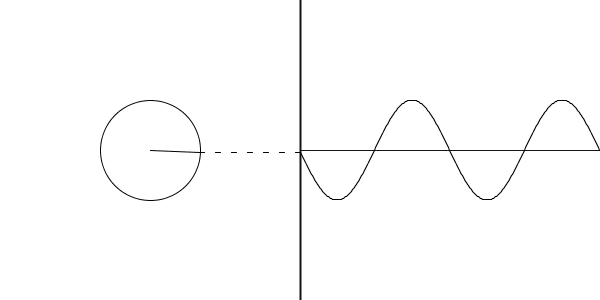I get it — we all want to be master closers. We’ve all watched hours of Dan Lok, Grant Cardone, and Jordan Belfort expertly juggle a prospect’s concerns and look badass while doing it.
But as any actual master closer will tell you, the reality behind good sales is far less glamorous, and often requires a far less sophisticated solution.
Let me explain.
Any time I’ve ever struggled with not getting enough sales, it was essentially because I was:
- Not contacting enough people
- Not qualifying my prospects as well as I could be (usually for short-term KPI reasons)
The first problem is straightforward: as our pipeline fills with meetings and pitches, there’s less available time for opening, and we push prospecting to the wayside.
Over the span of a month or two, eventually our reduced prospecting catches up with us — we now have a thinner pipeline, fewer meetings, and more time to open. We start ferociously prospecting again, and our pipeline fills up.
Our sales pipeline thus goes up and down in waves.

Many think this is a natural, unavoidable part of sales. But while it’s true that there’s always going to be some sort of cycle (humans do work off of the 24-hour cycle usually referred to as the day, after all), the best sales professionals do everything in their power to minimize the distance between their peaks and their troughs. They try to flatten the cycle as much as possible.
How? Every time they win, close a deal, or otherwise move a prospect down through their pipeline, instead of taking a “well-deserved break”, they take their success as a cue to work even harder.
Instead of closing a deal and then celebrating with a fancy lunch afterwards, they’ll close a deal and then dial five more prospects. They’ll book a meeting and then visit two more leads. It’s literally a rule for them to never rest on their laurels, because they’re always just a few opportunities away from their next big break.
This flattens the cycle mentioned above, and helps build up sales inertia. You’ll grow and learn significantly faster than if you stick to the cyclical model like everybody else. Rejections will stop being rejections — you’ll start thanking people for saying no, because they’ve just given you precious minutes of your time back.
Try it. Adopt this mindset for a month and see where it gets you. Sure, it sucks — especially since most people traditionally associate success with deserving to slack off afterwards. But it’s one of the big reasons top salespeople make $300,000+/year. If you want to make more money than you’ve ever made, you’re going to have to do things you’ve never done.
The second problem — KPIs — is something I personally see with new hires at smaller sales organizations. Trainees usually have several hard metrics they need to hit: prospects contacted, appointments booked, contracts won, and a few others. There are often some liberties given due to their inexperience; a new hire, for example, probably won’t be closing as many deals as a seasoned veteran right out of the gate.
The issue is when, in an attempt to please their managers, new hires will overinflate the beginning of their pipeline by booking unqualified meetings or contacting unqualified prospects to make them appear good on paper. This won’t help them close more deals (because the meetings or the prospects are unqualified), but they’ll have higher short-term KPIs. This can help them win favor with management, which then rationalizes away their low closing ratio with “potential” and “hustle”.
I’ve done this. Many of my colleagues have done this. And it feels good while you’re doing it — I mean, one of your performance metrics is meetings booked, right? Seeing that number skyrocket (even if the meetings or prospects are unqualified) means you must be doing something right!
But you’re just shooting yourself in the foot. It’s always better to find out a prospect is a no now rather than in a meeting that you’ve budgeted a significant portion of your day for.
You could be using that time to contact more people. And indeed, the best salespeople do. Instead of being afraid to probe a prospect because you think they’ll disqualify themselves — and thus decrease your short term KPIs — make sure they’re as close to an ideal match as possible first so you don’t waste time further down the pipeline. Filter from the front.
Sure, you’ll have less meetings booked on paper. Sure, your prospects contacted volume will look lower. But really, the big thing that you (and your sales company) cares about is deals signed. After all, meetings don’t make you money — contracts do.
Bottom line, if you’re not getting the results you want out of your sales game, take a cold hard look at yourself in the mirror. Ask the person you see:
- What number of people are you contacting on a daily, weekly, or monthly basis?
- Why isn’t that number higher?
- How are you qualifying your leads?
- Are you afraid to push early because you’re trying to appeal to management? Remember, what management really cares about is the number of dollars you put in their pockets — not inflated short-term KPIs
The reason I love sales as much as I do is that there’s no room for excuses. Complaining will get you nowhere.
If you’re not getting the results you want, it’s your fault. People who take extreme responsibility in sales will get extreme results, and the top 1% of earners in any sales organization make it a habit to constantly self-reflect and ask themselves why they’re not doing better.
You have the power to make as much money as you want: the line between everything you’ve ever dreamed of and nothing is just a step away. Take that step today!



